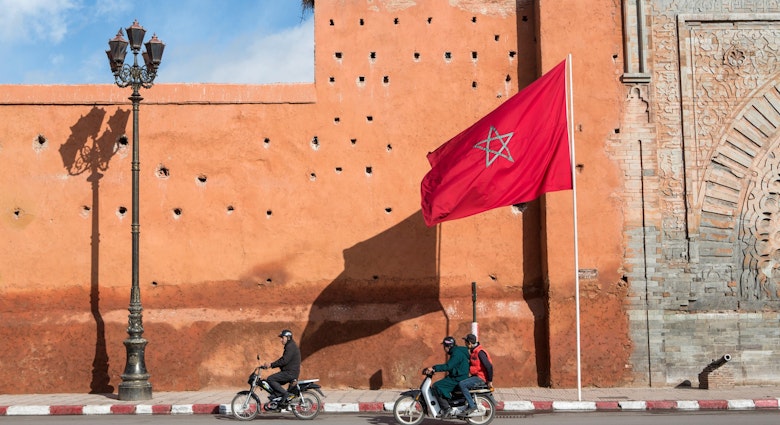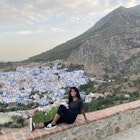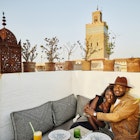Adventure awaits around every corner in Marrakesh. A walk through the centuries-old medina fills your eyes with vivid colours from every spot on the spectrum, and you’re bound to get lost attempting to navigate the busy streets teeming with people and animals. After a day of shopping and exploring this beautifully chaotic city, you’ll want to relax, and fortunately Marrakesh has just the treat.
One of the most popular and traditional ways to unwind is by visiting a hammam, a Moroccan bathhouse. Hammams are found in every neighbourhood in Marrakesh, and they are a weekly ritual for many locals, which is worth adopting while you’re here.

A brief history of hammams
Communal bathhouses originated in Roman times. Once solely reserved for men, over time they opened up to women and soon became an important part of life for all. It’s not known when the hammam first came to Morocco, but Hammam Mouassine, the oldest (and one of the best) in Marrakesh, dates to 1572. Cleanliness is an imperative part of life in Islamic societies, and washing rituals are performed before prayers. In the past, the lack of indoor plumbing and reliable hot water made hammams a necessity and a welcome treat. Today, they’re also a space for socialising.
The hammam procedure
Hammams are segregated by gender. In public neighbourhood hammams, men and women have separate days or times to bathe. In private hammams that are operated by hotels or run as a business, it will likely be just you and the attendant.
When you arrive, you’ll be guided to a changing room to strip down to your underwear. You’ll then step into a hot steam room with the attendant, who will pour warm water over you, along with savon noir, a special soap made with olive oil. The soap will be left to soak in for a few minutes, and then the attendant will rinse you off and scrub you with a special glove to remove the dead skin. After the exfoliation, you’ll be directed to wash yourself off with soap and shampoo.
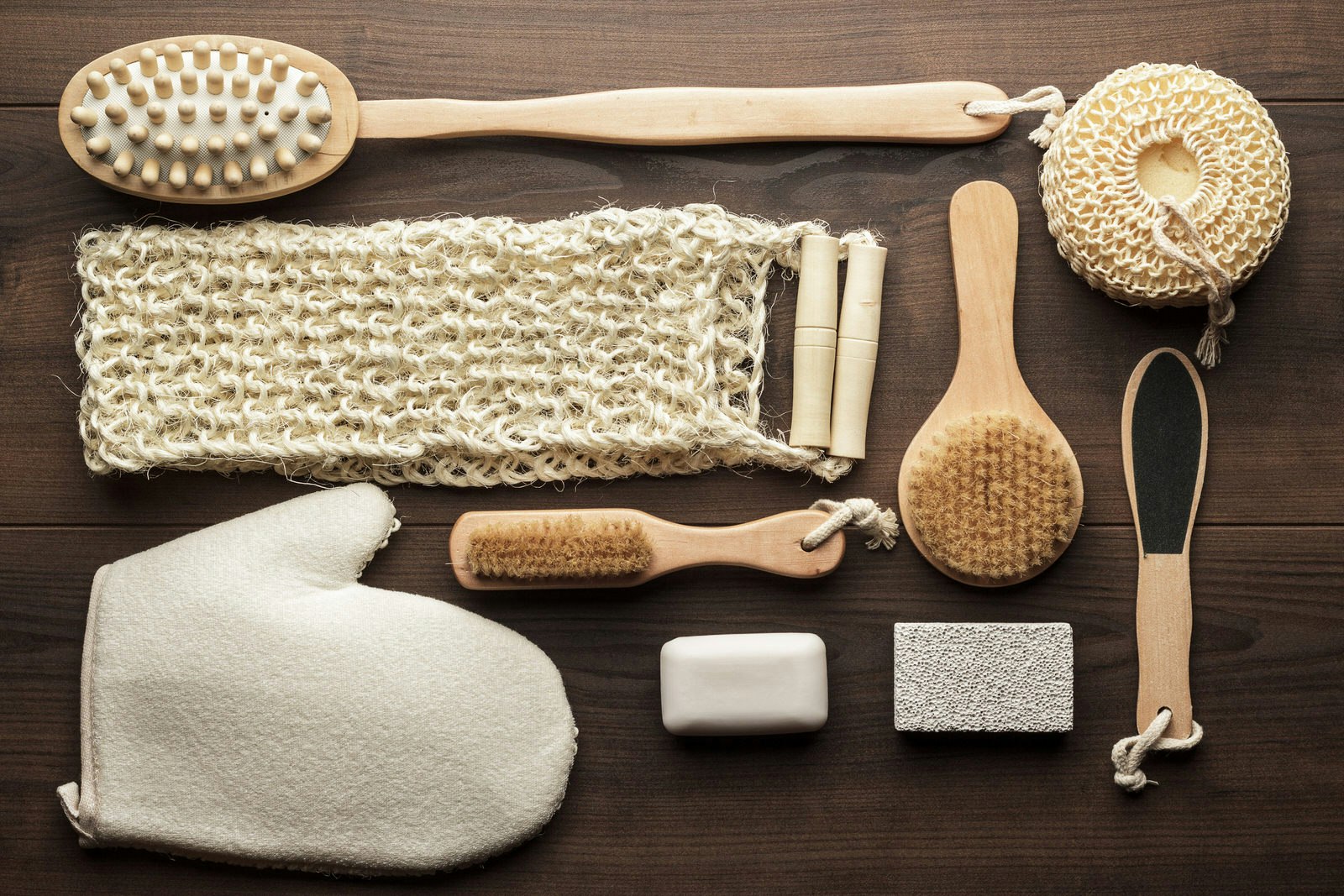
What to bring
For a private hammam, you’ll only need to pack clothes to change into after your session. Some private hammams provide disposable underwear, or you can wear your own. If you feel more comfortable covering up more than this, you can, but the attendant will likely move your bathing suit during the full body scrub.
Visiting a traditional neighbourhood hammam is cheaper (about Dh10) than a private hammam, but it means bringing some DIY kit: a small bowl for scooping water, a kessa (scrubbing mitt), savon noir, your own shampoo and other toiletries, a plastic mat for the floor, a change of clothes and a towel to dry off with. Nothing is provided in neighbourhood hammams, but your accommodation can often help you arrange everything you need. You can choose to scrub yourself or pay an attendant to do it for an extra Dh50 to Dh100.
Marrakesh’s best hammams
Marrakesh has an infinite array of quality hammam options, from the insanely affordable (around Dh20) to over-the-top luxury that can cost more than Dh1000. No matter how much you’re willing to splash out, each hammam is a chance to be a part of this Moroccan tradition. It’s worth choosing a hammam close to your accommodation so you can float back in bliss when your treatment is finished.
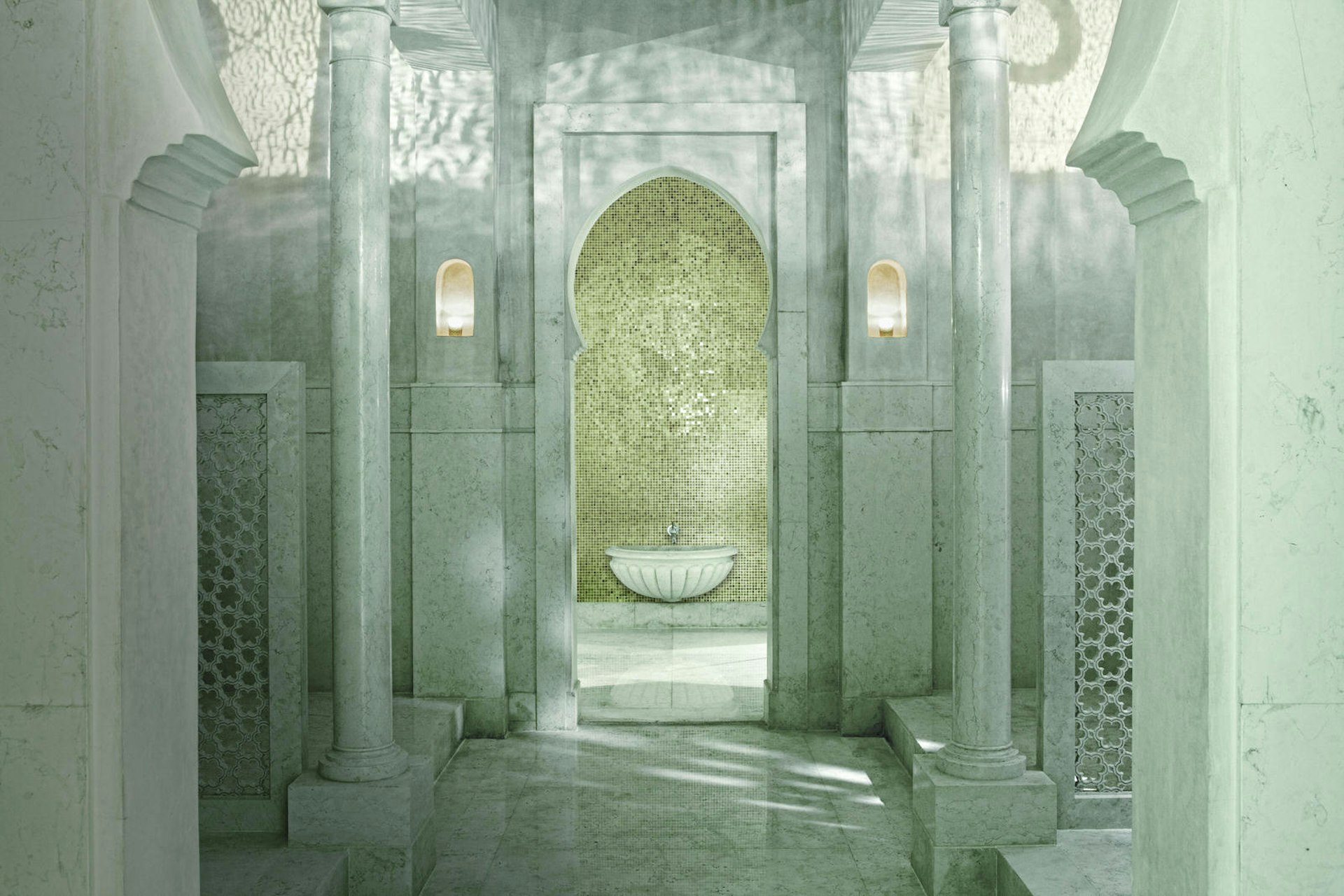
Royal Mansour
The Royal Mansour on the southwestern edge of the medina is the most glamorous spa and hammam in Marrakesh. This place isn’t just throwing around the ‘royal’ moniker – it’s owned by the king of Morocco and it’s modelled after the royal palace – and the impeccable service and top-notch products will make you feel like royalty too. Hidden among palm trees and gardens, this spa has an impressive white foyer with sky-high ceilings and a bird-cage like interior. Budget travellers might balk at the princely prices (treatments start at Dh1400), but if you want to splurge, this is the place.
Hammam Rosa Bonheur
Simple and understated Hammam Rosa Bonheur is located in a riad (a traditional Moroccan house) with various treatment rooms on each floor. The hammam rooms are decorated with colourful geometric Moroccan tiles and tadelakt, a traditional waterproof plaster often found in Moroccan homes. Book a hammam treatment from Dh250 and add on a massage and lunch for an additional fee. Although this hammam is in Marrakesh’s labyrinthine medina, don’t worry about getting lost – you can be picked up and whisked straight there for your treatment.

Heritage Spa
If you’re after affordable luxury, Heritage Spa in the Bab Doukkala neighbourhood is a great choice. Each of the treatment rooms reflects traditional Moroccan craftsmanship with gorgeous tilework and tadelakt, and attendants use all-natural plant-based soaps and essential oils. Try the Hammam Beldi Detox (Dh290) for an in-depth scrub and renewal using soothing argan and bitter orange oils.
Hammam Mouassine
Marrakesh’s oldest hammam, Hammam Mouassine, is also one of its best and most authentic. Hammam Mouassine has been in operation since the 16th century, and what it lacks in style (it’s not Marrakesh’s prettiest bathhouse), it makes up for in history. Traditional hammams like this one are designed to be functional, with three tadelakt-plastered rooms that vary in temperature. Water nozzles line the wall, constantly supplying hot and cold water to bathers’ buckets. There are no treatment areas, and hammam-goers stake their claim to a section of the floor and scrub themselves or pay Dh50 to Dh100 for an attendant. Hammam Mouassine is a public hammam, so bring your own bathing supplies. Entry starts at Dh10.

Neighbourhood hammams
If you’re on a budget or simply want the most authentic experience, visit a neighbourhood hammam. They exist in every quarter of the city and are open to the public. Ask the staff at your riad or hotel concierge to help you find one. Opt for the hammam closest to where you’re staying to make things easy, as these hammams don’t have names or addresses. Smaller hammams alternate opening times for men and women.
http://shop.lonelyplanet.com/morocco/pocket-marrakesh-4/


